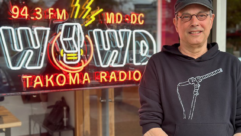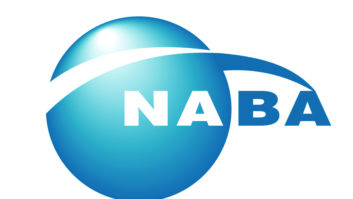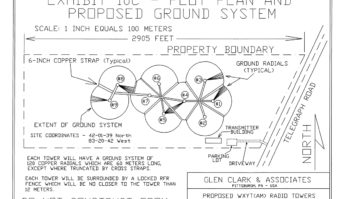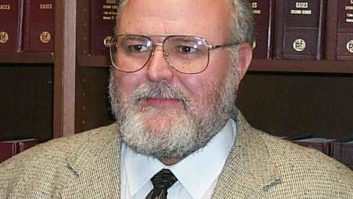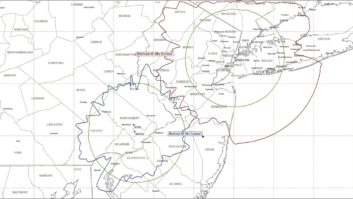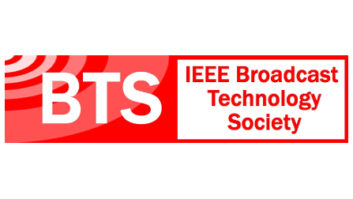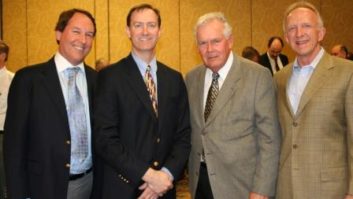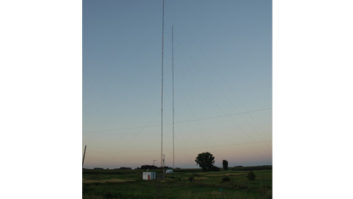Thoughts about IBOC
May 1, 2002 12:00 PM, By John Battison, P.E., technical editor, RF
Many engineers anxiously awaited the release of the National Radio Systems Committee’s AM IBOC Report, in hopes that the report would reveal good news about AM IBOC.
The engineering world has been working on the development and evaluation of IBOC transmission for some time. The NRSC began evaluation proceedings of general DAB systems in 1995. After the proponents merged into one, Ibiquity was left in the running for potential adoption. In the fall of 2001, the NRSC issued a report on Ibiquity’s FM IBOC. This comprehensive report, runs 62 pages of engineering material plus 13 appendices. All of which covers the features and important areas of the FM application of the system with its blend-to-analog from digital-to-analog operation as signal levels change.
The application of FM IBOC has been studied by the NRSC and appears to be understood and accepted by radio engineers. AM IBOC has recently been studied by an NRSC working group as a prelude to its adoption for general broadcast use. Its was presented during the NAB convention in April.
AM IBOC carried the most promise of service improvement, but the initial studies show that it may only be suitable for daytime service.

Now, after the presentation of the AM IBOC report, the FCC must decide whether to propose a set of standards for the AM and FM IBOC services based on these reports or to require more testing. The NRSC report does not adopt the system as a standard by the FCC; it presents an overview of an investigation of both systems. The decision to prescribe a set of standards for IBOC must come from the FCC. It is hoped that the FCC will not cause IBOC to go the way of AM stereo.
Boom or bust?
IBOC could be a valuable addition to a broadcaster’s armor, or it might end up as merely another avenue of expense that will have to be entered into without a waiting audience of suitably equipped receivers. The situation is similar to that faced by TV stations compelled to install expensive digital equipment without a digitally-equipped receiving audience, which has not yet embraced digital TV with open arms. On the other hand, if the NRSC report confirms what many engineers are hoping and expecting, new transmitting broadcast facilities could produce additional quality air time for AM and FM licensees to sell from the same site and revitalize our familiar and somewhat overloaded radio bands.
The FM Report covers eight areas of vital performance concern to the broadcaster and listener alike. If all of these concerns can be met as successfully by AM IBOC, and the receiver manufacturers rally to develop and produce the necessary receiving equipment, I feel that we can anticipate a brighter outlook for many AM stations.
The evaluated FM concerns were audio quality, service area, acquisition performance, durability, auxiliary data capacity, behavior as signal degrades, stereo separation and flexibility.
One of the features of the Ibiquity IBOC system as tested was noted as a seamless glide to FM from analog after tuning in an IBOC signal. The delay is about 4.5 seconds. This transmission delay may cause problems in off-air monitoring, and this will have to be tackled by individual stations as necessary. Stations are becoming accustomed to a system delay from the use of codecs, DSP-based audio processors and digital STLs.
Even if an IBOC standard is adopted, it will be some time before a significant receiver base exists.

The FM IBOC tests used a software radio whose performance is presumably not the same as a commercial auto radio receiver. For this reason, the NRSC tests did not comment on the audio performance obtained in the tests on a received signal that had blended to analog. It seems likely that the AM IBOC tests might also have to use a software radio unless some receiver manufacturer has developed a prototype auto receiver designed for AM IBOC.
The FM report paid strong attention to the use of SCA services on FM IBOC. About half of all the operating FM stations employ one or more SCAs for reading for the blind or similar services. In addition, RBDS and DARC systems use SCAs for data transmission. Appendix J of the NRSC Report provided detailed test results.
Regular broadcast station WPOC and experimental WD2XAB were used for the SCA tests, and the NRSC high-lighted something that has probably been known by users of SCA receivers, but not previously been broadly discussed. The laboratory tests showed that there are significant differences in the performance of various makes of SCA receivers. These differences persisted despite the presence or absence of IBOC signals.
In the field tests, similar results were observed with and without IBOC. Some receivers took IBOC in stride and performed normally, while others completely failed.
Proper antenna orientation for analog SCA signals must be practiced by SCA-receiver users to obtain a good signal. This is to be expected in view of the complexity of SCA operation, which is dependent on the operating characteristics of the transmitter, adjacent channel signals and field strength.
AM IBOC
The NRSC report on AM IBOC recommends to the FCC that AM IBOC be approved for daytime use. The daytime service is comparable to FM, but at night, due to first- and second-adjacent channel interference problems, AM IBOC is not recommended. The proponent, Ibiquity, does not anticipate that sky-wave reception will be possible, and more AM IBOC tests will be needed to determine if it will eventually be usable at night as a local ground-wave service. In the 15kHz bandwidth are three 5kHz subcarriers, which are susceptible to first- and second-adjacent channel interference.
AM IBOC relies on ground wave propagation and works successfully to around the 2mV/m contour. It has been successfully received with field strengths as low as 0.6mV/m.
The daytime signal suffers from noise problems,interference and infringing AM signals. Stereo AM IBOC degrades gently as signal strength declines, from good FM stereo to FM mono and eventually to AM blend.
It appears that AM IBOC will produce quality audio within the 2mV/m contours in the daytime, but it is not recommended for night use. This seems a dubious advantage over regular AM broadcast transmission. Many stations suffer impaired night signals, and much hope was placed on the possibility of a superior night signal. Many stations will think twice about spending money to improve an already good day signal without improving the night signal. This AM IBOC report is based on conversations prior to the report’s submission to the full committee and on information from the final recommendation. Pending further test data, we can only hope for better news for improved night operation.
E-mail Battison at[email protected].




